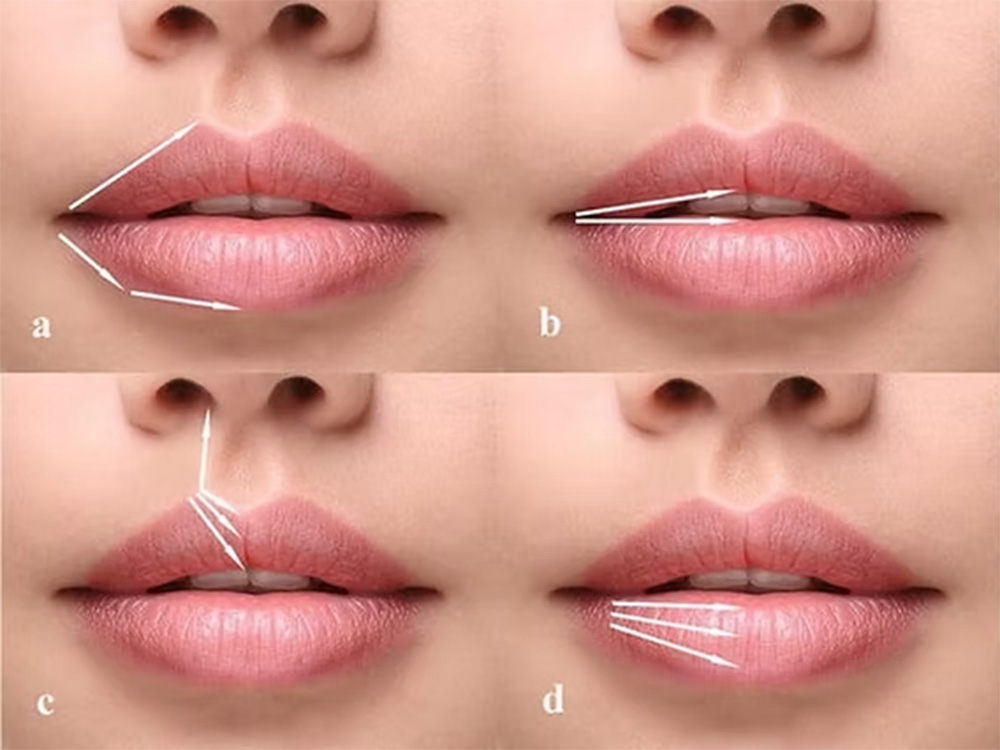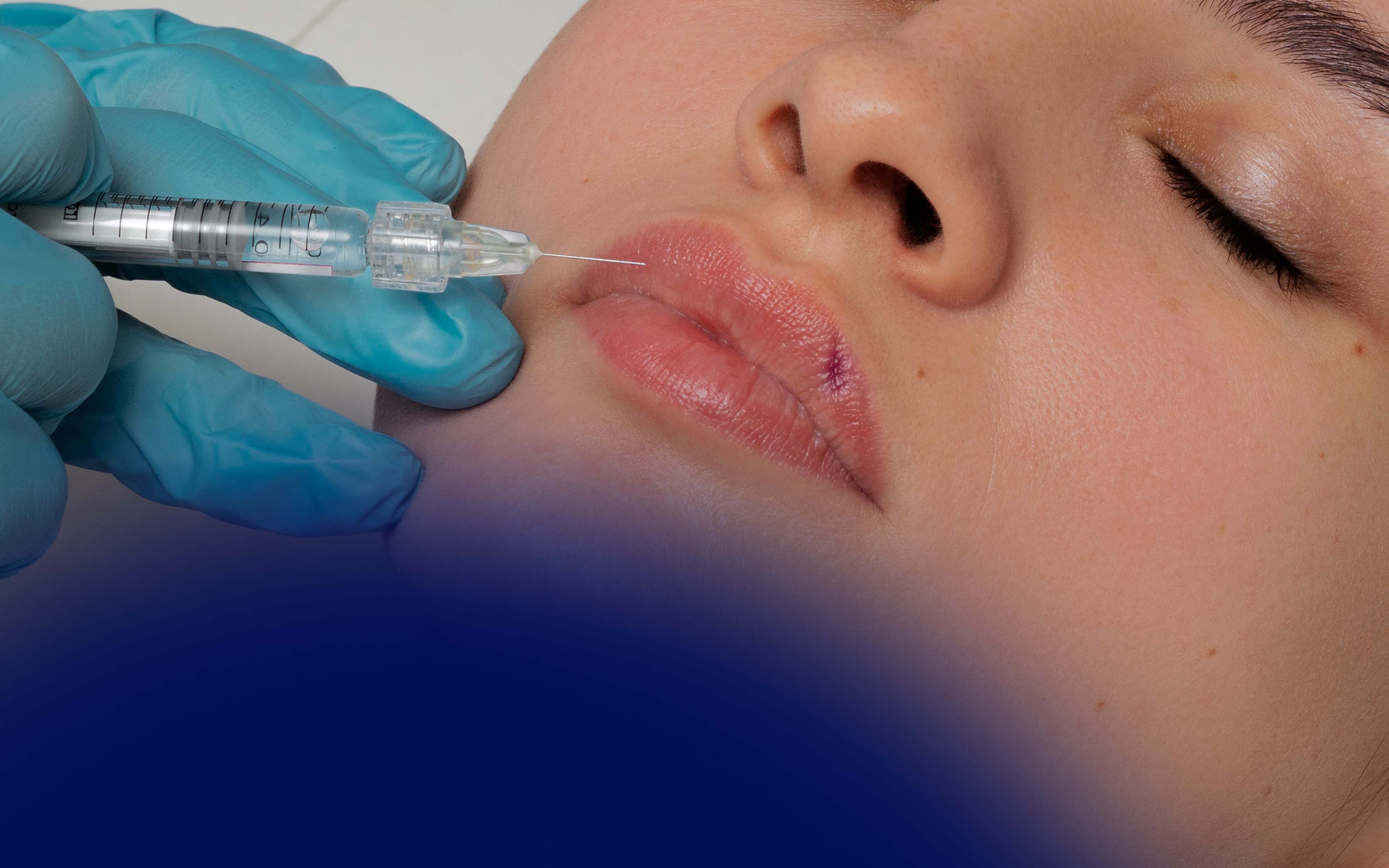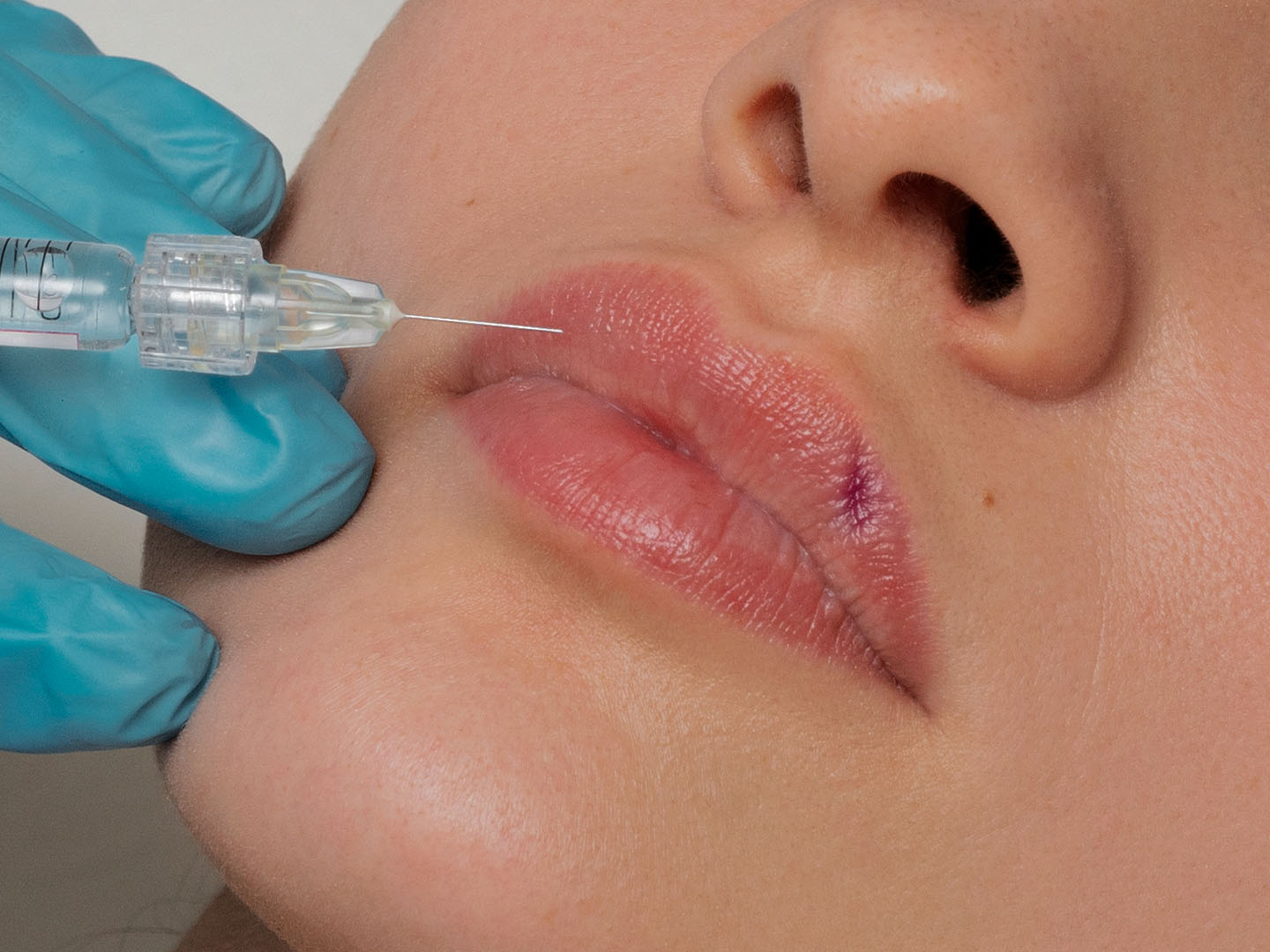
Lip scars present a unique clinical challenge, requiring specialized techniques, thorough assessment, and patient-centered planning. The presence of scar tissue complicates the anatomy and increases the risk of adverse outcomes for dermal filler treatments.
Lip filler training, such as Lip Enhancement Training, can teach medical professionals to be more skilled in dealing with challenging cases, like lips with scars. The relationship between lip fillers and scars is complex, as pre-existing scar tissue can affect filler distribution, integration, and aesthetic outcomes.
Key Takeaways
- Scarred lips require a conservative approach due to altered vascularity and tissue texture.
- Low-volume, slow injections with appropriate aspiration help minimize complications.
- Fillers should be selected based on scar type and tissue response, although HA fillers are preferred.
- Combination therapies like PRP, subcision, and microneedling can improve outcomes.
- Patient education is critical, especially in identifying signs of vascular compromise or HSV flare-up.
- Long-term improvement may be possible due to neocollagenesis and soft tissue remodeling.
- Practitioners should be trained in aesthetic complications to manage risks effectively.
Understanding Lip Scarring
Lip scars may originate from a variety of causes: trauma, surgical procedures, burns, or recurring herpes simplex infections. These scars often differ in appearance and texture depending on their etiology.
Scar tissue is typically less vascularized, denser, and less elastic than normal mucosal tissue. It may also be adherent to deeper structures. These changes alter the normal lip anatomy and can result in poor filler integration or unpredictable outcomes if not handled correctly.

Assessment of Lips with Scars Before Filler Treatment
A full medical and procedural history is critical before treating lips with scars. This includes understanding the scar’s origin, healing trajectory, and any prior aesthetic treatments. During examination, assess for tissue pliability, vascularity, and surface irregularity.
Identify the scar type and tailor treatment accordingly:
- Hypertrophic scars: Raised, firm, and often reddish scars caused by excess collagen production during healing. They remain within the boundaries of the original wound.
- Atrophic scars: Depressed or sunken scars resulting from tissue loss, commonly seen after acne, trauma, or infections.
- Post-surgical scars: Linear or irregular scars that form after surgical incisions. Their appearance varies based on surgical technique, wound healing, and patient predisposition.
- Herpes-related scars: Irregular, shallow, or pitted marks left after recurrent herpes simplex lesions, often affecting the vermilion border and lip contour.
Patient goals should be discussed with transparency regarding the need for staged sessions or subtle corrections. Addressing psychosocial concerns is essential, as lip scars can significantly impact a patient’s confidence and self-image.

Filler Injection Techniques for Lips with Scars
When treating lip scars with dermal fillers, the injector must account for tissue density, reduced vascularity, and asymmetry caused by previous trauma or surgery.
Injection techniques in scarred lips must be carefully adapted to the altered anatomy and tissue quality.
The goal is to enhance volume and smoothness while minimizing trauma, product visibility, or vascular compromise. Practitioners should always combine a knowledge of tissue planes with technique precision to achieve the safest, most natural results:
- Micro-bolusing: Deposit small, controlled amounts of filler at specific points to gradually lift tissue and reduce the risk of lumpiness in fibrotic areas.
- Micro-threading: Use linear threading with minimal product per pass, especially in superficial planes, to avoid irregular filler distribution.
- Multi-plane injections: Work at both superficial and deep layers to create natural volume and support, especially where scar tethering is present.
- Use of cannula: In dense scar tissue, a blunt-tip cannula can reduce trauma and risk of vascular injury, especially when navigating compromised planes.
- Low-pressure injection: Inject slowly with gentle pressure to accommodate the resistance of fibrotic areas and prevent product extrusion or migration.
- Aspiration and vigilance: Always aspirate and proceed with heightened anatomical awareness, especially in zones with distorted landmarks due to scarring.
Mastering lip filler techniques is essential when treating scarred lips, as precision, depth control, and tissue response vary significantly from healthy tissue.

Safety Considerations in Treating Lips with Scars
Scarred lips present distinct vascular and structural challenges that demand added caution during treatment. Reduced blood flow in scar tissue increases the risk of ischemia and delays in healing, so injectors should approach with precision and care.
A conservative injection strategy is crucial. This includes slow, low-volume filler placement and consistent aspiration. For patients with a known history of herpes simplex, prophylactic antivirals are recommended prior to any procedure involving the lips. Patients should be instructed to watch for warning signs such as increasing pain, tissue blanching, or slow recovery and to report them without delay.
Can Lip Fillers Cause Scars?
Scarring as a direct result of hyaluronic acid fillers is rare. Most cases described as “lip filler scarring” are actually nodules, granulomas, or fibrosis secondary to improper technique or poor filler selection.
Risk factors for scarring include repeated injections in the same site, use of non-HA fillers, infection, or unskilled injector technique. These risks can be more effectively managed by practitioners who have completed aesthetics complications training, such as the Emergencies in Aesthetic Medicine Masterclass at HubMed Ed.
Combination Therapies with Fillers for Lip Scars
Multimodal strategies are often necessary when treating lips with pre-existing scars. These combination therapies aim to improve skin texture, increase filler integration, and reduce the visual prominence of scars:
- Microneedling can stimulate collagen remodeling and improve the texture of fibrotic scar tissue.
- Platelet-rich plasma (PRP) injections may enhance healing and rejuvenation when combined with HA fillers.
- Laser resurfacing, such as fractional CO2 or erbium lasers, helps soften scar edges and refine lip contour before or between filler sessions.
- Subcision can be used to mechanically release tethered scars, making filler placement more uniform.
- Low-dose botulinum toxin may assist in relaxing hypertonic muscle tension contributing to hypertrophic or contractile scarring.
Therapies should always be personalized based on scar morphology, patient history, and treatment goals.

Choosing the Right Filler for Lips with Scars
The choice of filler should reflect both the depth and texture of the defect, as well as how the scarred tissue responds to volume restoration. Scar tissue lip augmentation often requires more conservative product choice, careful injection depth, and the possibility of staged treatment to achieve balanced results.
For surface-level irregularities or subtle asymmetries, softer hyaluronic acid (HA) fillers with smooth rheology offer better integration and flexibility. In contrast, structured and cohesive HA fillers may be required to lift deeper depressions or correct volume deficits.
HA-based products remain the safest option for scarred lips due to their reversibility with hyaluronidase. Permanent fillers or overly dense formulations are not recommended in this area, as they carry higher risks of poor integration, migration, or adverse reactions in compromised tissue.
Long-Term Outcomes and Maintenance in Scarred Lips
Due to compromised vascularity and ECM remodeling, fillers in scar tissue may degrade faster than in normal lip tissue. This means that patients have to repeat the treatment more often than they would need to otherwise.
Nevertheless, the stimulation of fibroblasts and neocollagenesis with HA fillers may gradually improve scar quality over time. With proper technique and maintenance, long-term enhancement is achievable.
Finally
Lip scars can be effectively treated with advanced filler techniques, strategic product selection, and well-planned combination therapies. Although true scarring from dermal fillers is rare, understanding risk factors, utilizing the appropriate approach, and providing patient education are essential for optimal results.
This is why aesthetic medical training courses at HubMed Ed are a valuable resource for all practitioners to improve their techniques and provide the best care to their patients.
FAQs
How to stop lips from scarring?
Good wound hygiene, sun protection, and avoiding unnecessary trauma can help reduce the chance of scarring. Preventive interventions should start early in the healing phase.
Do lip scars ever go away?
Some scars may fade significantly over time, while others can persist long-term. Their appearance can often be improved through aesthetic treatments such as microneedling or dermal fillers.
Does vitamin E cream help with scars?
While vitamin E is commonly used for scars, clinical evidence supporting its effectiveness is limited. In some cases, it may cause irritation or contact dermatitis.
Who cannot get lip fillers?
Patients with active skin infections, certain autoimmune conditions, or known hypersensitivity to filler ingredients should avoid lip augmentation. A full medical evaluation is necessary before treatment.
How to hide scars on lips?
Scars can be concealed using targeted cosmetic makeup or neutralizing lip colors. Aesthetic interventions like fillers and laser resurfacing may also minimize their visibility.
References:
- Jain R, Tanawade S, Joshi S, Naik C, Garad A, Chablani D. Advancements in lip augmentation: A scoping review exploring novel techniques. J Cutan Aesthet Surg. 2024;17(3):167–176. doi:10.25259/jcas_144_23. https://pmc.ncbi.nlm.nih.gov/articles/PMC11497539/
- opera D, Ivezic Schoenfeld Z, Federspiel IG, Grablowitz D, et al. Treatment of facial lipoatrophy, morphological asymmetry, or debilitating scars with the hyaluronic acid dermal filler Princess FILLER. Clin Cosmet Investig Dermatol. 2018;11:621–628. doi:10.2147/CCID.S181964. https://www.researchgate.net/publication/329215498_Treatment_of_facial_lipoatrophy_morphological_asymmetry_or_debilitating_scars_with_the_hyaluronic_acid_dermal_filler_Princess_FILLER
- Mossaad A, Kotb A, Ghanem W, Norwali I, Alsharif M, Ragheb YS. Hyaluronic filler for lip augmentation and scar correction in cleft lip Egyptian patients. J Pharm Negat Results. 2022;13(Special Issue 06):125. doi:10.47750/pnr.2022.13.S06.125. https://www.pnrjournal.com/index.php/home/article/view/1857
- Nardi BMF, Suguihara RT, Muknicka DP. The use of fillers and lip sculpting techniques in cleft lip: a narrative review of the literature. Res Soc Dev. 2023;12(6):e42116. doi:10.33448/rsd-v12i6.42116. https://rsdjournal.org/rsd/article/view/42116
- Yamasaki A, Lee LN. Facial fillers in lip reconstruction. Oper Tech Otolaryngol Head Neck Surg. 2020;31(1):38-44. doi:10.1016/j.otot.2019.12.009. https://www.sciencedirect.com/science/article/abs/pii/S1043181019300922
Disclaimer:
This article is intended for licensed medical professionals. All protocols, dosages, and treatment insights referenced herein are based on published literature. The content is not intended to encourage application, diagnosis, or self-treatment of unlicensed individuals, and should not be used as a substitute for the clinical judgment of a qualified healthcare provider.

